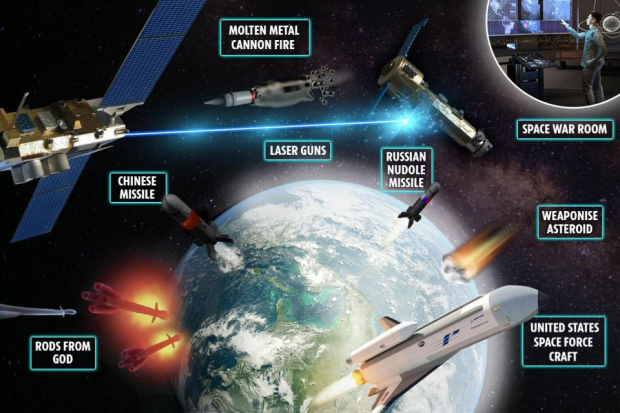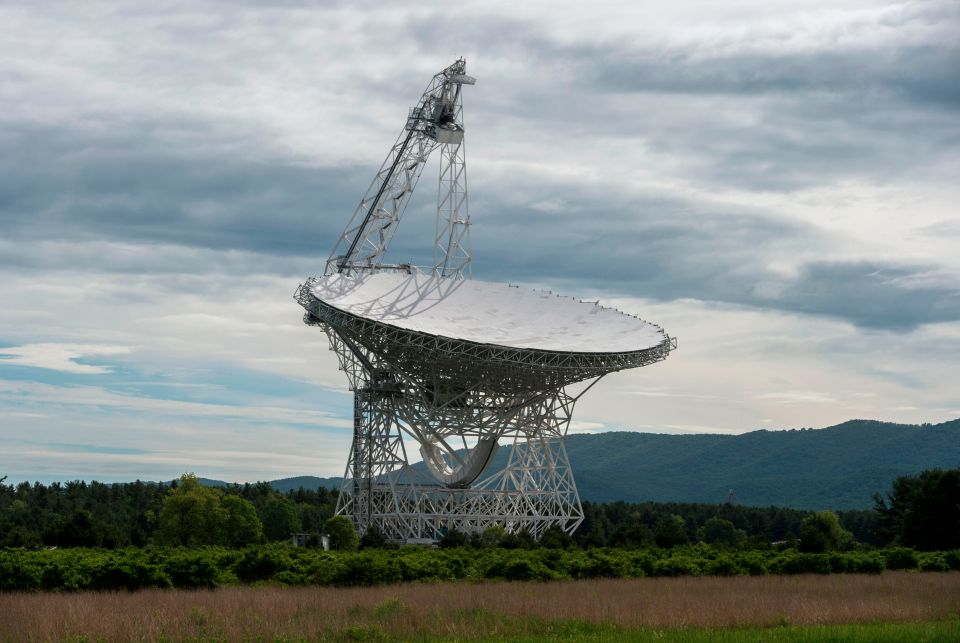A HIGH-powered telescope nestled in the remote wilderness may hold the key to finding extraterrestrial life.
The Green Bank Telescope became the first radio astronomy telescope in the United States at the time of its founding in 1957.
Radio telescopes like the GBT detect energy waves emitted by stellar objects and amplify them to learn more about their structure, composition, and movement through space.
If advanced extraterrestrial life exists beyond Earth, the GBT stands at the forefront of discovering it.
“It feels to me like this is something of a golden age,” radio astronomer Steve Croft explained.
The telescope contains 6,000 hard drives holding 40 petabytes of data, roughly equivalent to 40,000 laptops.
Scientists are looking for anomalies in radio wave data that suggest life forms might be trying to reach out.
Recent improvements in technology over the past decade, including advances in artificial intelligence and machine learning, are only helping to streamline the process.
These tools helps scientists comb through reams of data for “technosignatures,” or signs of alien technology.
These include nitrogen dioxide pollution, chlorofluorocarbons, nightside city lights, and evidence of agriculture.
And then there are unusual radio waves – on the off chance an alien civilization is pulsing out a signal to alert their neighbors.
The GBT sits in the National Radio Quiet Zone, designated by the U.S. government to help astronomers shield their equipment from radio interference.
Each year, researchers from the University of California, Berkeley head to the telescope during a period of track maintenance.
They are part of Breakthrough Listen, dubbed the “largest-ever scientific research program aimed at finding evidence of civilizations beyond Earth.”
Other groups across the world are looking for extraterrestrial technology, too.
In a paper published in The Astrophysical Journal this summer, scientists searched for the reflection of sunlight off solar panels on “Earth-like exoplanets.”
The team ultimately concluded that it would be near impossible to detect a civilization harnessing solar power, as solar energy is too efficient.
It was just the latest in a series of false starts. In 2020, the Breakthrough Listen team found a lead in the nearest star system, Proxima Centauri.
However, analysis revealed that the blip was no more than human radio interference.
Scientists, including those at the GBT, maintain hope amid a flurry of technological advancements, believing they are growing closer to a breakthrough every day.
Matt Lebofsky, lead system administrator, doesn’t think the excitement is “deflating” at all.
“I feel like the chances are improving exponentially every year,” he said.
Terrifying space weapons of the future

Here are three of the scariest…
Rods from God
- A strange but utterly terrifying weapon has been dubbed “rods from the God” and is based on the concept of creating man-made meteorites that can be guided towards the enemy.
- Instead of using rocks rods the size of telephone poles are deployed.
- These would be made out of tungsten — a rare metal that can stand the intense heat generated by entering Earth’s atmosphere.
- One satellite fires the rods towards the Earth’s atmosphere while the other steers them to a target on the ground.
- Reaching speeds of 7000mph they hit the ground with the force of a small nuclear weapon — but crucially creating no radiation fall out.
- As bizarre as it sounds, a US Congressional report recently revealed the military has been pushing ahead with the kinetic space weapons.
Molten metal cannons
- This intriguing idea is being developed by the US Defense Advanced Research Projects Agency (DARPA).
- It is called the Magneto Hydrodynamic Explosive Munition or MAHEM.
- This game changing rail-gun can fire a jet of molten metal, hurled through space at several hundred miles per second by the most powerful electromagnets ever built.
- The molten metal can then morph into an aerodynamic slug during flight and pierce through another spacecraft or satellite and a munition explodes inside.
Space force ships
- Already the United States is powering head with its spacecraft, although China is busy developing one of their own.
- The top secret American XS-1 under development by DARPA.
- It can travel ten times the speed of sound and launch missiles.
- Meanwhile an unmanned craft is currently being developed in the China Aerodynamics Research and Development Centre in Mianyang, Sichuan province, which is also known as Base 29.



